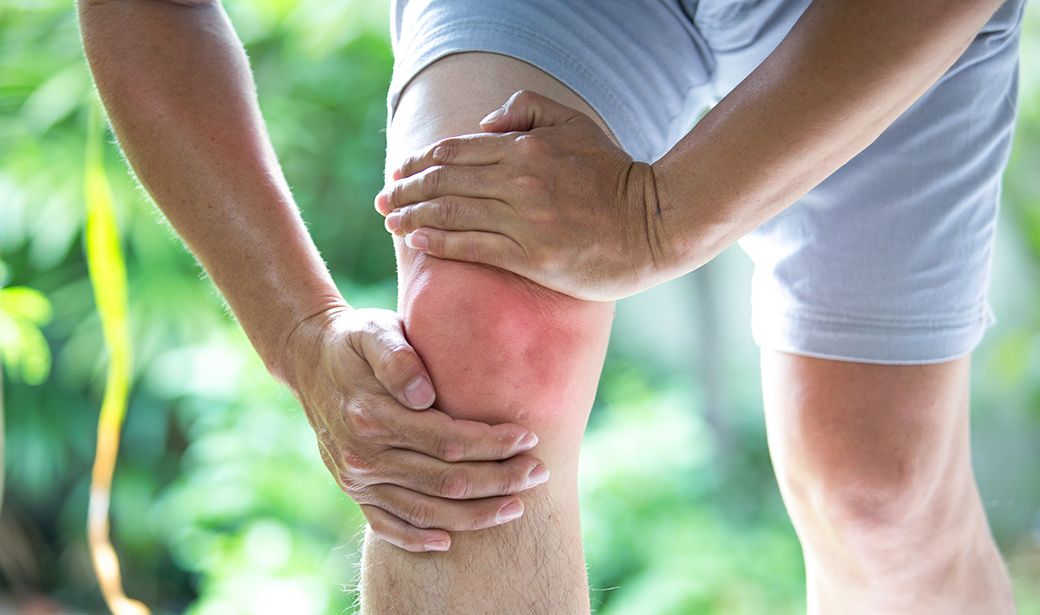

By Dr. Jeremy Campbell,
Licensed Doctor of Physical Therapy
Experiencing joint pain can be both debilitating and frustrating.
It's a widespread issue, affecting people from all walks of life.
To effectively address joint pain, it's crucial to understand its underlying causes and the solutions available.
In this comprehensive guide, we'll explore the root causes of joint pain and offer practical solutions to help you manage and alleviate your discomfort.
What Triggers Joint Pain?
Understanding the root causes of joint pain is the first step towards finding effective relief and regaining your mobility and quality of life.
Let’s delve deeper into each cause to equip you with the knowledge you need for better joint health.
Below are the major culprits behind the discomfort and aches in your joints.
1. Inflammation: The Body's Double-Edged Sword
At its core, inflammation is our body's response to injury or infection.
It’s a protective measure to remove harmful stimuli and begin the healing process.
However, when inflammation becomes chronic, it can contribute to several health issues, including joint pain.
Factors Leading to Inflammation:
- Injury-Induced Inflammation: Accidents, falls, or sports injuries can lead to inflammation in the joints. This response is part of the body's effort to heal the injured area.
- Autoimmune Disorders: Conditions like rheumatoid arthritis are characterized by the immune system mistakenly attacking the joints, leading to inflammation and pain.
- Infections: Certain bacterial or viral infections can trigger joint inflammation, causing pain and swelling.
2. Cartilage Breakdown
Cartilage is the cushioning material at the end of bones within a joint.
Over time, factors like aging or diseases such as osteoarthritis can cause this cartilage to wear away, leading to painful bone-on-bone friction.
- Age-Related Wear and Tear: As we age, our cartilage naturally begins to deteriorate, reducing its effectiveness as a cushion.
- Disease-Induced Damage: Diseases like osteoarthritis accelerate the breakdown of cartilage, exacerbating joint pain.
3. Toxic Synovial Joint Fluid
Synovial fluid lubricates our joints for smooth movement.
However, this fluid can become toxic due to medical conditions or infections, damaging the cartilage and intensifying joint pain.
How To Find Relief From Joint Pain

After identifying the main causes of joint pain, the next crucial step is discovering the paths to relief.
Equipped with the right knowledge, you can start taking the steps necessary to alleviate your pain and reclaim the joys of a mobile and active lifestyle.
Let’s explore the various ways to mitigate joint pain, enhance joint flexibility, and bolster overall joint health.
1. Addressing Nutritional Deficiencies
Diet plays a pivotal role in joint health.
Deficiencies in key nutrients can exacerbate inflammation and joint pain.
Omega-3 Fatty Acids: Found in fish and flaxseeds, these fats can help reduce inflammation.
Antioxidants and Vitamins: A diet rich in fruits, vegetables, and whole grains provides the necessary antioxidants and vitamins to combat joint inflammation.
2. Regular Exercise and Physiotherapy
Gentle exercises like swimming or walking can strengthen the muscles around joints, providing better support and alleviating pain.
Physiotherapy offers tailored exercises for improved flexibility and strength.
3. Natural Anti-inflammatory Foods
Natural anti-inflammatories such as turmeric and ginger can be effective in reducing joint pain.
These can be included in your diet or taken as supplements.
4. Hydration and Joint Health
Staying well-hydrated is essential for maintaining the health of synovial fluid and, by extension, your joints. Ensure you're drinking enough water throughout the day.
5. Mind-Body Techniques
Practices like yoga and meditation can help manage the stress that often exacerbates joint pain.
These techniques also improve flexibility and strength, benefiting joint health.
Conclusion
Managing joint pain involves a multifaceted approach that includes dietary changes, exercise, and possibly professional intervention.
By understanding the causes of your joint pain and adopting these strategies, you can significantly improve your quality of life.
Remember, what works for one person may not work for another, so it’s crucial to find the approach that best suits your individual needs.
Stay proactive in your journey to better joint health, and don't hesitate to seek professional guidance when needed.
With patience and perseverance, a more active and pain-free life is within your reach.


